Birds have incredibly delicate eyes that are susceptible to various injuries, including scratches, infections, foreign body penetration, and trauma. It is crucial to provide immediate and appropriate treatment to minimize pain and prevent further complications.
If you’re wondering how to treat a bird eye injury, we are here to help. This article will guide you through the essential steps for treating bird eye injuries, ensuring your feathered friend receives the care they need.
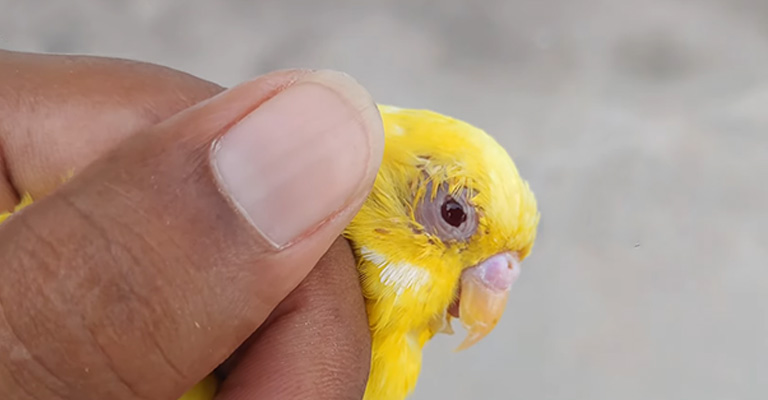
How to Treat Bird Eye Injury?
If your bird’s eye is injured, follow these steps:
Step 1: Evaluate the Severity of the Injury
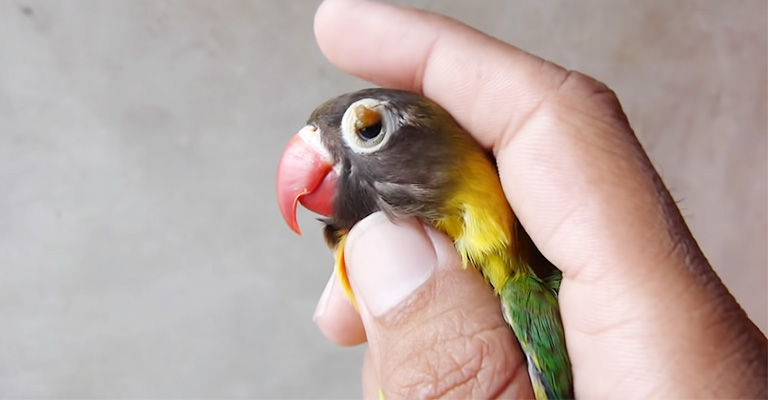
Before initiating any treatment, it is essential to assess the severity of the bird’s eye injury. Observe the bird closely to determine if there are any visible wounds, swelling, bleeding, discharge, or signs of pain.
If you notice a foreign object lodged in the eye, never attempt to remove it yourself, as it may cause further damage. Assessing the situation accurately will help you decide whether you can manage the treatment at home or if professional veterinary assistance is necessary.
Step 2: Safety Precautions
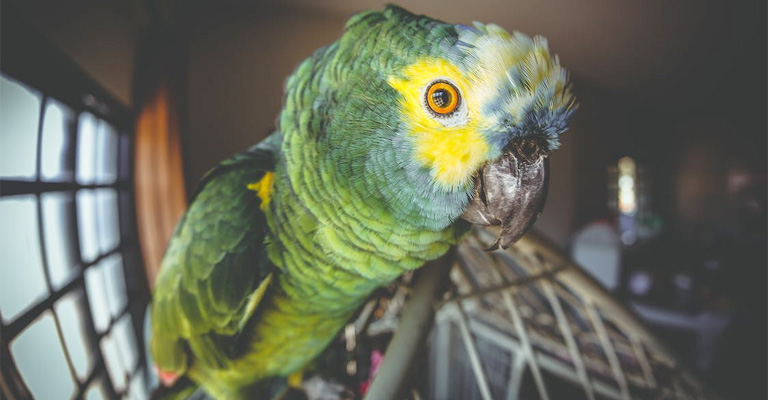
When dealing with a bird’s eye injury, it is crucial to ensure your safety and the safety of the bird. Use gloves to protect yourself from potential zoonotic diseases.
It is recommended to handle the bird gently and securely, minimizing any additional stress or injury. If the bird is in pain or scared, consider using a towel or a cloth to gently restrain it during the treatment process.
Step 3: Flushing and Cleaning
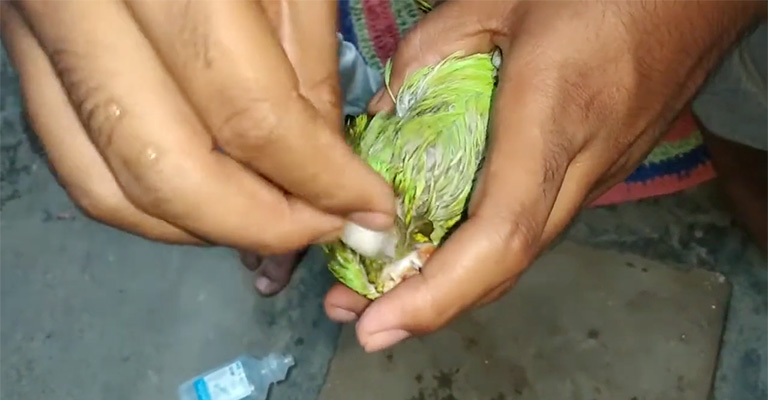
If the injury is minor and doesn’t involve a foreign object, you can gently flush the affected eye with a sterile saline solution or lukewarm water. Use a dropper or syringe to administer the solution, aiming for a gentle stream that will help remove any debris or irritants from the eye.
Be careful not to apply too much pressure or use harsh chemicals as this may further aggravate the injury.
Step 4: Removing Foreign Objects
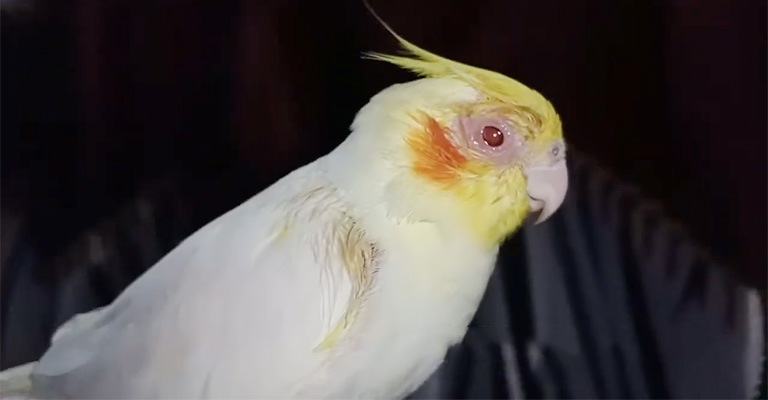
If you notice a foreign object embedded in the bird’s eye, it is crucial not to attempt to remove it yourself. Instead, seek immediate veterinary assistance. Trying to remove a foreign object without proper training and tools can cause additional damage to the delicate eye tissues.
Step 5: Applying Eye Ointment or Drops
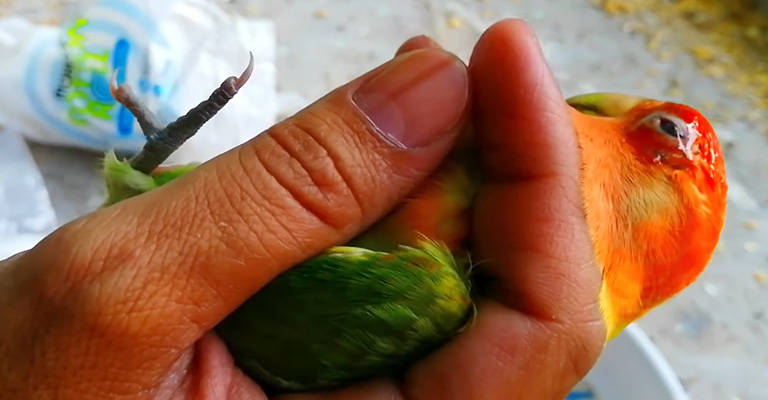
After flushing and cleaning the eye, your avian veterinarian may prescribe an appropriate eye ointment or drops to prevent infection and promote healing.
Follow the veterinarian’s instructions carefully when administering medication to ensure the bird receives the correct dosage. Use clean hands and avoid touching the tip of the dropper or tube to prevent contamination.
Step 6: Provide a Calm and Safe Environment
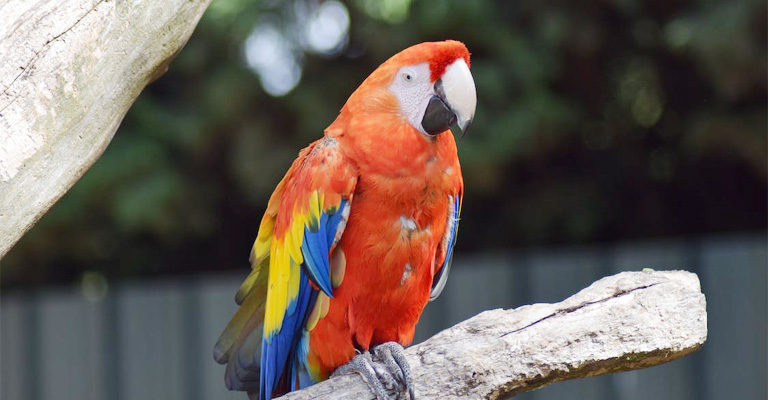
Create a quiet and stress-free environment for the bird during the healing process. Keep other pets or potential stressors away, as stress can hinder the recovery process. Ensure the cage or enclosure is clean and free from any sharp or dangerous objects that could further harm the bird’s eye.
Step 7: Regular Monitoring and Follow-Up
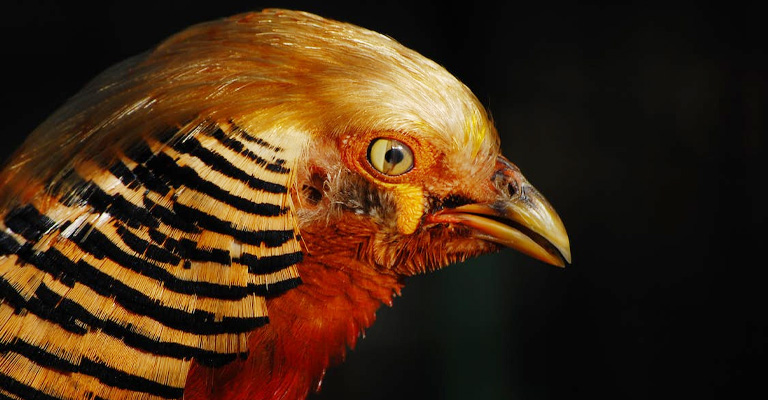
Monitor the bird’s eye closely for any signs of improvement or worsening. Look out for redness, swelling, discharge, or changes in behavior. If the bird’s condition deteriorates or fails to improve within a reasonable timeframe, contact your avian veterinarian for further guidance.
Regular follow-up appointments may be necessary to ensure the injury is healing properly.
Signs of Birds Eye Injury
Signs of a bird’s eye injury can vary depending on the severity and nature of the injury. Here are some common signs to look out for:
Abnormal Appearance
The affected eye may appear swollen, red, or cloudy. You may notice a change in the size or shape of the eye.
Discharge
There might be excessive tearing or discharge from the eye. The discharge can be clear, cloudy, or even bloody.
Squinting or Closing the Eye
Birds with eye injuries often squint or close the affected eye to protect it from further damage or to alleviate discomfort.
Change in Behavior
Birds in pain or distress may exhibit changes in behavior, such as decreased activity, loss of appetite, or increased aggression.
Eye Color Change
The color of the iris may change due to inflammation or damage to the eye tissues.
Inability to Track Objects
Birds with eye injuries may have difficulty following objects or tracking movement with the affected eye.
Vision Problems
The bird may show signs of impaired vision, such as bumping into objects, missing perches, or having difficulty locating food.
Bleeding or Trauma
In severe cases, you may observe bleeding from the eye or visible signs of trauma, such as scratches, cuts, or puncture wounds.
If you suspect that a bird has an eye injury, it is important to seek immediate veterinary care. Bird eye injuries can be serious and require professional evaluation and treatment.
Causes of Injury in Birds
Birds can sustain injuries from various causes. Here are some common causes of injury in birds:
Collisions
Birds can collide with objects such as windows, buildings, vehicles, or other birds, resulting in injuries. Window collisions are particularly common as birds may not recognize the presence of glass.
Predation
Predators such as cats, dogs, or larger birds can injure birds during hunting attempts.
Flying into Obstacles
Birds may fly into trees, branches, power lines, fences, or other structures while in flight, leading to injuries.
Trapping or Entanglement
Birds can become trapped or entangled in nets, fishing lines, or other human-made structures, causing injuries to their wings, feet, or beaks.
Attacks from Other Animals
Birds may be attacked by other birds, mammals, or even reptiles, leading to injuries such as bite wounds or talon injuries.
Human Interactions
Improper handling or mishandling by humans can result in injuries to birds, such as broken wings or bones.
Poisoning
Birds can be exposed to toxic substances in their environment, such as pesticides, chemicals, or contaminated food, leading to various health issues and injuries.
Accidents During Captivity
Birds kept as pets or in captivity can sustain injuries from accidents within their enclosures, such as getting caught in cage wires, falling from perches, or being injured by toys or other objects.
Environmental Hazards
Extreme weather conditions, such as storms or hail, can cause injuries to birds. Additionally, exposure to extreme temperatures, strong winds, or environmental pollutants can also be harmful.
It’s important to create a safe environment for birds and take precautions to prevent injuries whenever possible. If you encounter an injured bird, it is advisable to contact local wildlife rehabilitators or veterinarians who specialize in avian care for appropriate assistance.
Common Bird Eye Disorders
Several common eye disorders can affect birds. Here are some examples:
Conjunctivitis
Conjunctivitis, also known as “pink eye,” is an inflammation of the conjunctiva, the thin membrane that covers the front of the eye.
It can be caused by bacterial, viral, or fungal infections, as well as allergies or irritants. Conjunctivitis can result in redness, swelling, discharge, and discomfort in the affected eye.
Cataracts
Cataracts are characterized by the clouding of the lens of the eye, which leads to impaired vision or blindness. Cataracts can develop due to age, nutritional deficiencies, trauma, or genetic factors.
Keratitis
Keratitis is the inflammation of the cornea, the clear front surface of the eye. It can be caused by infections, trauma, foreign bodies, or exposure to irritants. Symptoms may include redness, tearing, squinting, and a hazy or ulcerated cornea.
Glaucoma
Glaucoma is a condition characterized by increased pressure within the eye, which can damage the optic nerve and lead to vision loss.
It can occur due to a variety of reasons, including genetics, trauma, or other underlying eye diseases. Birds with glaucoma may exhibit squinting, enlarged or bulging eyes, and changes in behavior.
Uveitis
Uveitis refers to inflammation of the uvea, the middle layer of the eye that includes the iris, ciliary body, and choroid. It can be caused by infections, trauma, systemic diseases, or autoimmune disorders. Symptoms include redness, sensitivity to light, changes in pupil size, and pain.
Retinal Disorders
Various retinal disorders can affect birds, including retinal detachment, retinal degeneration, and retinal hemorrhages. These conditions can cause vision loss and may be caused by trauma, infections, or underlying systemic diseases.
Ocular Tumors
Birds can develop tumors in the eye or surrounding structures, such as eyelids or conjunctiva. Tumors can be benign or malignant and may require surgical intervention or other treatments.
It’s important to note that bird eye disorders can have various causes and symptoms, and proper diagnosis and treatment should be sought from a veterinarian or avian specialist for accurate assessment and appropriate care.
FAQs
It is not recommended to use human eye drops or ointments on birds without the guidance of a veterinarian.
Bird eyes are different from human eyes, and using the wrong medication can potentially worsen the injury or cause further complications. It is best to consult with an avian veterinarian for appropriate and safe medication for your bird.
If you notice any of the following signs, it is crucial to seek immediate veterinary assistance: excessive bleeding, a foreign object embedded in the eye, severe swelling or discharge, significant pain or distress, or any other abnormality that causes concern.
A prompt professional evaluation can prevent further damage and ensure appropriate treatment.
To minimize the risk of bird eye injuries, ensure the bird’s environment is free from sharp objects, avoid exposing them to potential hazards like predators or aggressive pets, and handle them gently and with care.
Regularly inspect the bird’s cage or enclosure for any potential dangers, and provide toys and perches that are safe and suitable for the species.
While it is always best to seek professional veterinary advice, in some cases, you can use simple home remedies to provide temporary relief. For example, a sterile saline solution or lukewarm water can be used to gently flush the eye.
However, it is important to remember that home remedies should not replace veterinary care, especially for more severe or complicated injuries.
The healing time for a bird’s eye injury can vary depending on the severity and nature of the injury. Minor injuries may heal within a few days to a week with appropriate care, while more severe injuries may take several weeks or even longer.
It is important to closely monitor the bird’s progress and consult with a veterinarian if there are any concerns or signs of worsening.
Wrapping Up
That was all about how to treat bird eye injury. Treating bird eye injuries requires prompt action, gentle care, and sometimes professional veterinary assistance.
By evaluating the severity of the injury, taking safety precautions, flushing and cleaning the eye, and administering prescribed medication, you can provide effective treatment for your feathered friend.
Remember to create a calm and safe environment and monitor the bird’s progress closely. If in doubt, always consult an avian veterinarian to ensure the best possible outcome for your bird’s eye health.